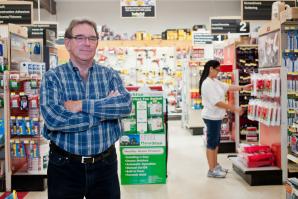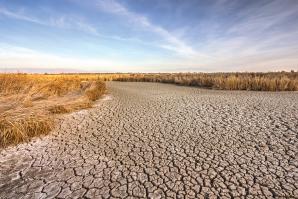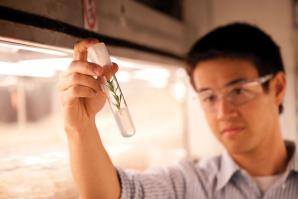In civic and business circles, we often hear the lament that Sacramento has never been a corporate headquarters. No Fortune 500 companies call the city home, so many believe this hampers our ability to fully prosper and grow. But, in addition to the attractive traits Sacramento does possess, it has a powerful economic catalyst in its backyard: a top-10 public research university that can be the lifeblood of a stronger, deeper and more resilient regional economy.
When I was named chancellor at UC Davis in 2009, one of the great attractions for me was that a top-flight public university bringing in more than $750 million a year in research grants could — and should — be a tremendous boon to the region’s economy.
And we are. As the Sacramento region’s single largest employer outside state government, UC Davis campuses in Davis and Sacramento are an economic juggernaut.
In addition to educating the next generation of innovators and entrepreneurs, UC Davis creates $7 billion a year in annual economic activity for the Sacramento area and supports nearly 70,000 jobs, according to a 2012 economic impact report. UC Davis’ annual budget exceeds $3.8 billion; we generate more than $3.4 billion a year in employee compensation alone. Given our role as employer, purchaser, real-estate and workforce developer, collaborator and facilitator, UC Davis is one of the most dynamic economic development engines in the region.
But as a land-grant university whose mission includes creating public benefit, we know we can and must do more.
Historically, Sacramento’s economy has been driven primarily by government, real estate and construction. That’s why it was understandable that when we began talking about the possibility of a new UC Davis campus in Sacramento, some viewed the idea as another local real estate story. Local media focused on what it would mean for our long-promised development potential if a new campus were located in Sacramento’s downtown railyards, for instance. If the campus were in West Sacramento, they wanted to know how it would boost that city’s ambitious plans for the future, in addition, of course, to what either location would mean for the city of Davis and for Yolo County.
Those are important questions, but only part of the story. The greater Sacramento region was reminded during the latest recession that we need a more diverse and resilient economy, and that we must work together to get there. That is the only way to make it through the inevitable next downturn and better position the city for economic strength and vitality far into the future.
We are blessed to have many talented people and organizations working on this, but when we envision the next economy that’s going to be built here on high-tech, clean energy, food-related innovation and health care, no single entity or institution is better equipped to lead the region and to help shape its future than UC Davis.
Look at the UC Davis Health System for a glimpse of just some of the ways the university can help shape its surroundings. When UC Davis established its medical school in the late 1960s, plans called for building a clinical teaching hospital on the Davis campus, but two bond measures failed and the idea was abandoned. The university had been using the old county hospital in Sacramento as a temporary teaching hospital and eventually acquired it instead. On land that once held the State Fair, we now have a highly regarded medical school, an acclaimed acute-care teaching hospital, a school of nursing and a multi-specialty physician group that serves 33 counties and 6 million residents.
In 1997, Shriners Hospital for Children opened on our campus, and we’ve since established the region’s only Comprehensive Cancer Center. In 2012, we teamed with the largest genomics research organization in China to create BGI@UC Davis, a partnership that is bringing in hundreds of jobs and elevating the genomic sciences in California.
The Health System alone is responsible for more than 20,000 jobs, and annual economic activity tops $3.4 billion. Impacts ripple through our regional economy to boost administrative and support services, real estate, professional, scientific and technical concerns, food services, insurance and more.
Where a major UC Davis facility decides to locate, plant roots and grow, good things follow, not just for this location but the entire region. Our faculty and staff live in an area spanning four counties and 10 cities, and our supportive services cover the whole state.
As UC Davis envisions its future and works to establish itself as the UC of the 21st century, it is easy to see a parallel between recycling the old fairgrounds into a major asset and the potential economic benefits that would come from the university expanding its presence in the Greater Sacramento region.
Over time, we can imagine a similar kind of dynamism if we develop a UC Davis campus closer to the Capitol, concentrating our expertise in policy, food, health and the environment. Among other things, such a campus might include the policy arm of our World Food Center, which we established a little more than a year ago.
As the leading university in the world for agriculture and food sciences, we want to better leverage that expertise to attract more research funding, pioneering scientists, jobs and companies focused on food and the nexus between food, public health and global sustainability.
We have an opportunity here that mirrors the path of Silicon Valley. That region took shape around computer and engineering research at Stanford University in the 1970s and ’80s. Other great American research universities, from UC San Diego and the University of Michigan, Ann Arbor, to Boston University and the University of North Carolina at Chapel Hill, have helped transform their regional economies.
The Capital Region’s civic and business leaders understand that to capitalize fully on our potential, we must think strategically, forge bold partnerships and embrace a certain amount of risk-taking. We must nurture regional leadership and unity.
Over the past five years, UC Davis has taken steps to re-energize our Office of Research and streamline and improve our ability to turn transformative research into jobs, companies and other public benefits. With the help of new campus centers like the Child Family Institute for Innovation and Entrepreneurship, our Venture Catalyst program and other campus entities, we’re connecting potential new startups with a range of mentoring and support that includes legal and other services needed to prosper in the Sacramento area.
It has taken more than a century of hard work and good fortune to establish UC Davis as a top research university. We look forward to continuing to work with our partners in the private sector, state and local government, Sacramento State, the community colleges and others to help the Capital City and its surrounding communities reach their full potential and build the kind of solid, forward-thinking economy we all want for our region.
Sick of missing out? Sign up for our weekly newsletter highlighting our most popular content. Or take it a step further and become a print subscriber — it’s both glossy and affordable!
Recommended For You

Vision Quest
Davis seeks a plan for its future personality
Doby Fleeman can feel the ground shifting. He can almost hear the
low rumble of engines.
“The steamrollers are on the move,” says Fleeman, manager of the
Davis Ace Hardware Co. “It’s like we’re on tectonic plates.
There’s a change in the wind.”

#YOLO
The 7 best bike rides in Yolo County
Lovely scenery along gently rolling foothills has always made Yolo County an ideal place for cyclists, but who knew everyone took it so seriously?

Dry Times
New water storage alone won't solve California's drought
California is in the third driest year in more than 100 years of record. Farmers throughout the state are seeing their water use curtailed, some communities are rationing water, and fish and wildlife populations are threatened. California needs additional storage capacity to weather such droughts, and it’s groundwater storage — not surface storage — that will have the greatest impact. Still, storage alone won’t be enough.

Genetically Engineered Industry
The Capital Region holds promise for agricultural technology
A few months after the 2002 launch of Arcadia Biosciences Inc. in Phoenix, CEO Eric Rey insisted the company move to California. Not to Silicon Valley, but to Davis.



